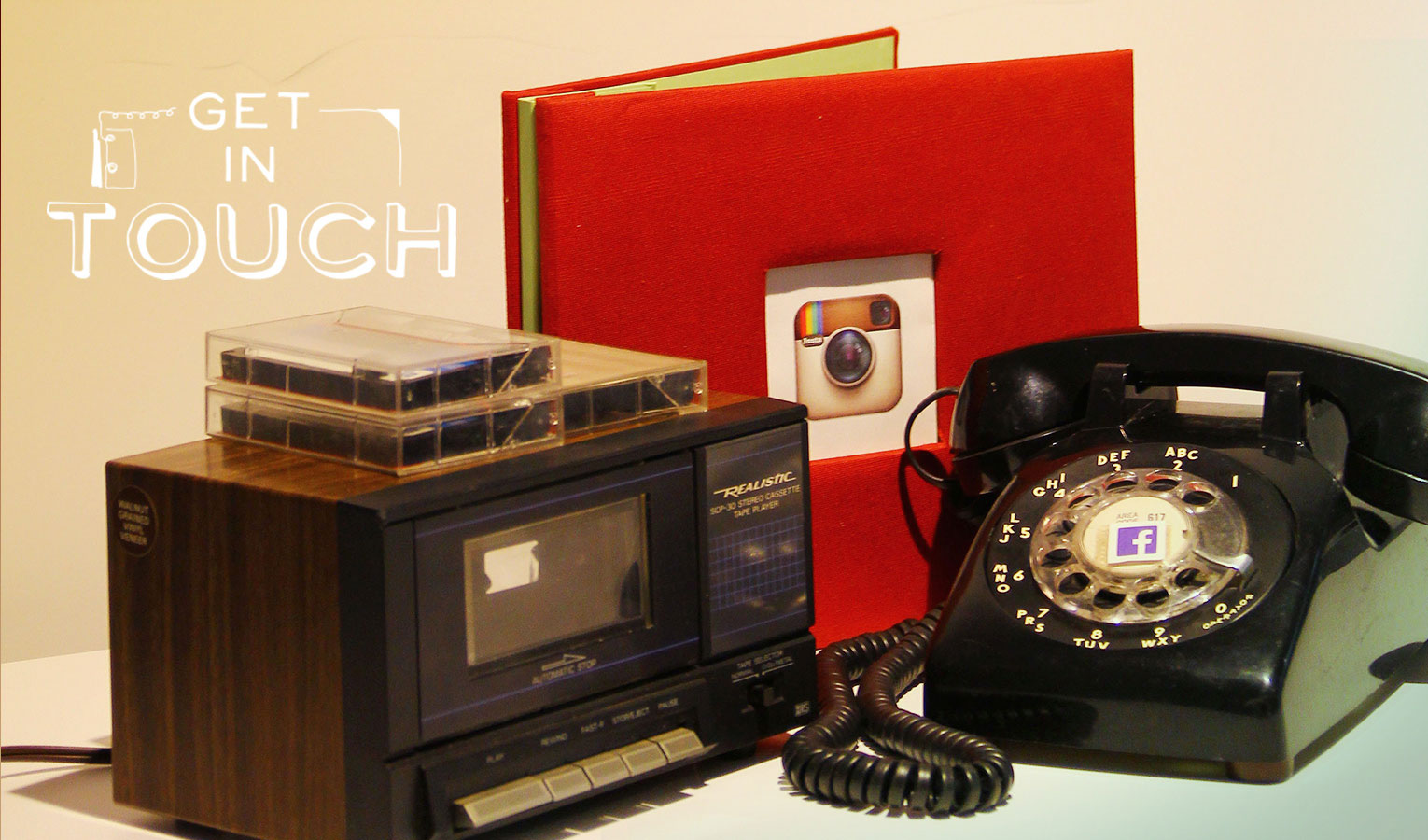Get In TOUCH
A Tangible Interface Series for Digital Contents and Services

David R. Carroll
Katherine Moriwaki
Writing and ResearchAndrew Zornoza
Get In TOUCH is a series of tangible interfaces that bring a retro touch and feel back to today’s digital communication. It provides three unique ways to access modern services and contents through nostalgic methods. It is a paper photo album, in which you flip pages to see Instagram photos. It is a cassette tape player, where you press the play key to listen to SoundCloud music. And it is a vintage telephone, where you dial a number, talk to the handset, and leave your friend a message on Facebook.
Living in a world full of advanced electronic devices, we take maximum advantage of their convenience. We are empowered to generate and transfer information at an astonishing speed. As a result, the amount of content we are exposed to sometimes become noisy and overwhelming. Endless scrolling on smartphones, a symptom of our addiction, often leaves us lost. The minimum touch of a fingertip triggers explosions of information. This subtle unbalance brings nostalgia of times when we communicated and shared with more tangible objects in our hands.
Let’s not forget that some of us are still not familiar with high-tech devices. Imagine an old lady anxiously trying to figure out how to login to Facebook to see her grandson’s photo. She is not really interested in Amazon sales or game updates. All she wants is to easily get in touch with the people she cares about. The digital social bubble leaves some people behind. The idea of converting nostalgic devices and objects into digital interfaces could be a solution for these people to step into our conversation. And for those of us in the digital world, the enhanced touch and feel may become a special experience helping us recall the core value of communication.
There is a different user scenario for each Get In TOUCH interface. The Instagram album only requires an Instagram user name. Visitors can browse this user’s photos just by turning the pages. The photos are projected on the paper, but the main interaction of flipping through the album remains the same. The SoundCloud tape collection offers visitors the ability to choose from SoundCloud playlists as each tape is linked to a special one. The interaction feels the same as using a cassette tape, but visitors know the fact that they are listening to music streaming online. The Facebook telephone represents a Facebook user. Visitor first needs to add this user as a friend. Then, an ID number of this visitor will be shown to the telephone Facebook user. By lifting the phone handset, dialing this number, talking and hanging up, visitors will then receive this voice message on their own Facebook.
The three mini installations generate a coherent atmosphere. They create a conversation around the value of touch and feel during interactions on digital platforms. By adding unexpected functions to retro settings, a poetic effect can lead to deeper thinking about how we interact with technology and how we interact with each other.

Xinhe Feng
Xinhe Feng is a multimedia interactive designer. She has a solid background in visual communication design, and a wide range of interests in human-computer interactions. During her MFA study in the Parsons Design and Technology program, Xinhe focused on UX design and creative interface design. Her goal is to use the maximum capacity of media to make our interactions with technology natural and engaging. She enjoys designing cool things that matter!
